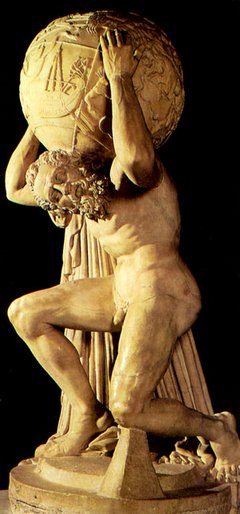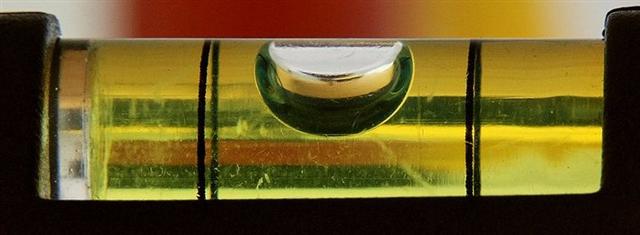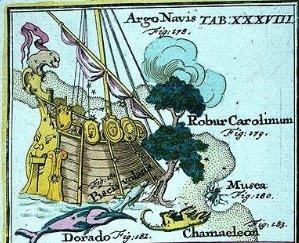TAHUA
42 As to the culmination dates they all should refer to
observations at 21h:
... Allen has documented all his star
culminations at 21h, which could be due to an effort of
keeping the culminations at their proper places according to
the ancients, 24h (spring equinox) - 21h = 3h = 24h / 8 =
45º. 3h corresponds to 366 / 8 = 45.75 of my right ascension
days and *366 - *46 = *320 (Dramasa, σ
Octantis) ...
|
MIRA |
ο Ceti |
3.04 |
03º 02' S |
'33.7 |
April 23 |
*29* |
|
ALGOL |
β Persei |
2.09 |
40º 46' N |
*45.9 |
May 5 |
*41* |
|
(Avior) |
ε Carinae |
1.86 |
59º 31' S |
*126.4 |
July 25 |
*122* |
None of the culmination dates for these variable stars had
been previously listed by me. However, by looking again in Allen I
found this statement:
"When on the meridian Algol is almost exactly in the zenith
of New York City. This is at nine o'clock in the evening of
the 23rd of December."
And therefore I can put Algol at the end of my culmination
table, only 8 days before Atlas:

| |
365 days |
| |
(80 + RA / 24h * 365¼) |
|
Day of culmination |
|
|
Atlas |
May 16 (136, *56) |
*229 |
Dec 31 (365,
*285) |
135 |
|
Betelgeuze |
June 17 (168, *88) |
*226 |
Jan 29 (394,
*314) |
138 |
|
CASTOR |
July 12 (193, *113.4 =
*41.4 + *72.0) |
'226 |
Febr 23
(Terminalia) |
138 |
|
MAY 9 (129 =
193 - 64) |
*226 |
DEC 21
(SOLSTICE) |
138 |
 |
|
Alkes |
Sept 3 (246) |
*229 |
April 20 (110) |
135 |
|
Denebola |
Sept 15 (258) |
*230 |
May 3 (123) |
134 |
|
Gienah |
Sept 22 (265,
*185) |
*230 |
May 10 (130, *50) |
134 |
|
ACRUX |
Sept 24 (267,
*187) |
*231 |
May 13 (133. *53) |
133 |
|
JULY 22
(*123 = *187 - *64) |
*231 |
MARCH 10
(*354
→
'290 + *64) |
| |
|
Thuban |
Oct 19 (292,
*212) |
*230 |
June 7 (158, *78) |
134 |
|
Arcturus |
Oct 22 (295,
*215) |
*227 |
June 8 (159, *79) |
*136 |
|
Zuben
Elgenubi |
Oct 31
(304, *224) |
|
June 17 (168, *454.
*88) |
*136 |
 |
|
Vega |
Dec 27 (361,
*281) |
*227 |
Aug 12 (224, *144) |
*137 |
|
Alphekka Meridiana |
Jan 5 (*290
↔ *307 - *17) |
*220 |
Aug 13 (225, *145) |
'146 |
|
Gredi |
Jan 22 (*307
↔
*314 - *7) |
*220 |
Sept 9 (251,
*171) |
'146 |
 |
|
Deneb Cygni |
Febr 7 (38, *323) |
*221 |
Sept 16 (259,
*179) |
*144 |
|
Fomalhaut |
March 3 (62, *348) |
*236 |
Oct 25 (*584, *218) |
|
|
* |
|
Schedir |
March 29 (88, *8) |
*233 |
Nov 18 (322, *242) |
131 |
|
Alrisha |
April 19 (109, *212 -
*183 = *29) |
*232 |
Dec 7 (341,
*261) |
132 |
| Menkar |
May
4 (124, *44) |
*231 |
Dec 21 (355,
*275) |
133 |
|
ALGOL |
May 5 (125,
*45) |
*232 |
Dec 23 (357,
*277) |
*132 |
I have decided to use the text on the G tablet as my leader.
Therefore I will here
update a
relevant part:
|
OCT
19 |
20
(293) |
21
(*214) |
 |
 |
 |
|
Ga8-9 |
Ga8-10 |
Ga8-11 (214) |
|
η Sagittarii (276.9) |
KAUS MEDIUS = δ Sagittarii,
κ Lyrae (277.5),
TUNG HAE (Heavenly Eastern Sea) = η Serpentis
(277.7),
SHAOU PIH (Minor Minister) = φ Draconis
(277.8),
KWEI SHE = χ Draconis
(277.9)
ALGOL
|
φ
Oct. (278.1),
KAUS AUSTRALIS
=
ε
Sagittarii
(278.3),
ξ
Pavonis (278.4),
AL ATHFAR (The Talons of the Falling Eagle) =
μ
Lyrae
(278.6)
*237.0 = *278.4 - *41.4 |
|
Purva Ashadha-20
Elephant tusk, fan, winnowing basket |
|
Dec
22 |
23
(357) |
CHRISTMAS EVE |
|
°Dec 18 (*272) |
19 |
20
(354) |
|
'Nov 25 (*249) |
26
(330) |
27 |
|
"Nov 11 (*235) |
12
(316) |
13 |
|
NAKSHATRA DATES: |
|
APRIL 20 (*30) |
21
(111) |
22
(477) |
|
FURUD = ζ Canis Majoris
(94.9) |
Well-22 (Tapir)
/
Arkū-sha-pu-u-mash-mashu-8
(Back of the Mouth of the Twins)
δ
Columbae (95.2),
TEJAT POSTERIOR =
μ
Gemini, MIRZAM (The Roarer) =
β
Canis Majoris (95.4),
CANOPUS (Canopy) = α Carinae
(95.6),
ε
Monocerotis (95.7),
ψ1
Aurigae (95.9)
*54.0 = *95.4 - *41.4 |
No star listed (96) |
|
June
23 (*94) |
ST
JOHN'S DAY (*460) |
25 (176) |
|
°June 19 |
20
(*91) |
SOLSTICE |
|
'May
27 |
28
(*68) |
29
(149) |
|
"May 13 (133) |
14
(*54) |
15
(500) |
 |
 |
 |
|
Ga1-30 |
Ga2-1 |
Ga2-2 |
... Midsummer is
the flowering
season of the
oak, which is
the tree of
endurance and
triumph, and
like the ash is
said to 'court
the lightning
flash'. Its
roots are
believed to
extend as deep
underground as
its branches
rise in the air
- Virgil
mentions this -
which makes it
emblematic of a
god whose law
runs both in
Heaven and in
the Underworld
... The month,
which takes its
name from
Juppiter the
oak-god, begins
on June 10th and
ends of July
7th. Midway
comes St. John's
Day, June 24th,
the day on which
the oak-king was
sacrificially
burned alive.
The Celtic year
was divided into
two halves with
the second half
beginning in
July, apparently
after a
seven-day wake,
or funeral
feast, in the
oak-king's
honour
...
|
In a remarkable way the great steering oar of Argo Navis
... It is an interesting fact, although
one little commented upon, that myths involving a canoe
journey, whether they originate from the Athapaskan and
north-western Salish, the Iroquois and north-eastern
Algonquin, or the Amazonian tribes, are very explicit about
the respective places allocated to passengers. In the case
of maritime, lake-dwelling or river-dwelling tribes, the
fact can be explained, in the first instance, by the
importance they attach to anything connected with
navigation: 'Literally and symbolically,' notes Goldman ...
referring to the Cubeo of the Uaupés basin,
'the river is a binding thread for the people. It is a
source of emergence and the path along which the ancestors
had travelled. It contains in its place names genealogical
as well as mythological references, the latter at the
petroglyphs in particular.' A little further on ... the same
observer adds: 'The most important position in the canoe are
those of stroke and steersman.
A woman travelling
with men always steers, because that is the lighter work.
She may even nurse her child while steering ... On a long
journey the prowsman or stroke is always the strongest man,
while a woman, or the weakest or oldest man is at the helm
...
would ideally be at the Full Moon in St John's Day at the
time when the
culmination of Algol would be half a year away!

... On the first day of their labour
// He himself, smith
Ilmarinen, // Stooped him down, intently gazing, // To
the bottom of the furnace, // If perchance amid the fire //
Something brilliant had developed.
From the flames there rose a crossbow,
// Golden bow from out the furnace; // 'Twas a gold bow
tipped with silver, // And the shaft shone bright with
copper.
And the bow was fair to gaze on, //
But of evil disposition // And a head each day demanded, //
And on feast-days two demanded, // He himself, smith
Ilmarinen, // Was not much delighted with it, // So he broke
the bow to pieces, // Cast it back into the furnace
...
|







